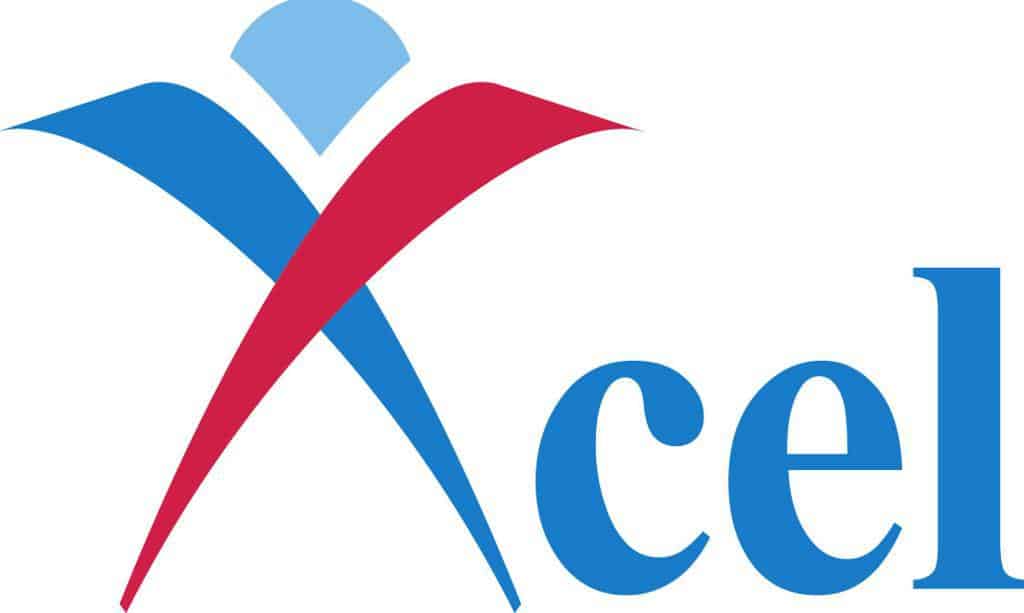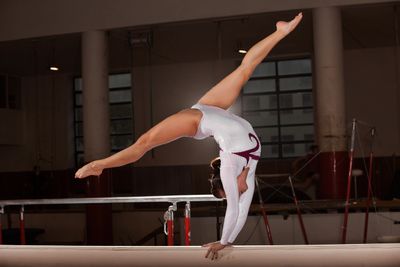The Xcel Program, a national USA Gymnastics program at level, runs in conjunction with the Junior Olympic (JO). The Xcel program can be used as an alternative program. We have had many parents ask us for help in deciding whether to have their gymnast compete in the Xcel program, or to switch to a program that will allow them to compete in the JO program. Both programs have their advantages and disadvantages. Some gyms prefer to compete in one while others do not.
Some gyms view the Xcel program it’s a way for less-serious gymnasts to compete. Some gyms add the Xcel program to their JO program. Other gyms also focus on the Xcel program in order to develop well-rounded gymnasts and then mobilize them through compulsory levels.
Xcel Gymnastics Program
The Xcel program, which was launched as a national program in 2013, is still relatively new on the gymnastics scene. The Xcel gymnastics program was designed to replace Prep Optional programs. Each state had its own rules and some did not have any. This could lead to confusion.
The Xcel program is identical across the country and has more levels than the Prep Optional program. Its main goal is to make learning and having fun easy for beginners. It is more of a pre-program than a full program. There are five levels to the Xcel gymnastics program. These levels do not have a number and are instead called: Bronze, Silver (Gold), Platinum, Diamond, and Platinum.
Xcel gymnasts can compete in competitions at the Xcel Bronze level from the moment they are able to compete. Sometimes, even before they have learned all the skills required for the routines. This helps them get used to competing quickly, which can be both challenging and fun. These competitions are open all year round. You can also skip levels to ensure you compete at the best level for your abilities.
Every level of competition has Xcel gymnastics skill requirements. However, young gymnasts who have not yet learned these skills can still compete. They will often score lower until they get better. They don’t even need to compete in all the events if they are needed.
This is a great program for young gymnasts who only want to learn the beam or bar. She can learn and compete in those areas in the program if she chooses. This is a great option for a gymnast who has difficulty learning one event.
The Xcel Program Was Born
The Xcel program was designed to keep gymnasts interested in the sport. When you look at other sports like soccer, almost all kids start playing in tournaments and games as soon as they join. It wasn’t the same with gymnastics. Gymnastics was a sport that kids would take for many years before being invited to join a team program. By lowering entry requirements, the Xcel program makes it possible for gymnasts to compete almost immediately.
The Xcel program does not have only basic entry levels. There are also more advanced levels, which allow gymnasts to continue competing in the Xcel program. They learn more skills and don’t feel as pressured as in the JO program. The Xcel program is great for both entry-level and advanced gymnasts. High school gymnastics teams often use similar rules to Xcel so it can help prepare gymnasts for high school.
For gymnasts who compete at the compulsory Jr. Olympic level and wish to compete in an alternative program, the Xcel program can be used. There are usually mandatory meets in the fall. However, there are also some Xcel meets in the optional spring.
The Xcel Program has its Pros And Cons
Pros
- Competing with Xcel is easier for gymnasts. As soon as they are accepted to an Xcel team, gymnasts can have fun competing in the Xcel program. They don’t need to wait for a JO invitation to join their team.
- Gymnasts compete, individual, personalized routines. A majority of athletes prefer to compete in routines that are tailored to their strengths, tastes, and personalities. What is more enjoyable, a floor routine with boring, instrumental music or the gymnast’s favorite music? An older gymnast might use the current song, but without lyrics, as her floor music.
- The Xcel Program requires less time commitment. With its strict routines, which require gymnasts to master a specific set of skills, the compulsory program can be difficult. You can train for competition while spending less time at the gym.
- The four events are not mandatory for gymnasts to compete in. Gymnasts don’t have to compete in all four events with the Xcel program. Gymnasts have the option to specialize in one or more events and not compete in others.
- To make it more affordable, entry fees are capped at Xcel.
Cons
- It is not possible to move directly from Xcel levels to the Jr Olympic Levels. Even if a gymnast competes for all the way to Diamond in the Xcel Divisions, which would be comparable to a level 7, to compete at level 7, she must have passed levels 4, 5, and 6. As long as she achieves minimum mobility scores, she can only compete in one meet at each level of mobilizing.
- The Xcel Program does not emphasize progressions as much as the Jr Olympic Program’s compulsory routines. This is partly why the JO compulsory program was designed the way it is. It has been proven to produce great gymnasts. The compulsory program is the best way to learn proper progressions and discipline if you want to get a college scholarship.
The Differences between The Junior Olympic Program and Xcel Program
You may be able to spot many of the differences by simply reading the descriptions, but there might have been some things you didn’t notice. Let’s take a closer look at each different one by one.
The Levels
The most obvious difference between the JO and Xcel programs is the names and number of levels. The JO program can be divided into 10 levels, which are called 1-10. However, the Xcel program can be divided into five levels, which are called: Bronze, Silver Gold, Platinum, and Diamond.
Don’t be misled into believing that each level of the Xcel program is equivalent to two JO levels. The highest level of the Xcel program’s Diamond level is the Diamond level. It is most similar to the JO level 6 or 7. While the skills at the Gold level of Xcel are the most similar to the JO level 4, the Xcel level is most like level 4. The JO national program is four levels more challenging than the Xcel program.
| Junior Olympic Program Levels | Xcel Program Levels |
|---|---|
| Level 1 | Bronze |
| Level 2 | Silver |
| Level 3 | Gold |
| Level 4 | Platinum |
| Level 5 | Diamond |
| Level 6 | |
| Level 7 | |
| Level 8 | |
| Level 9 | |
| Level 10 |
Before you can advance to the next level in the Junior Olympic program, you need to master four more advanced skills. You can excel at three events but not at one event. This can limit your ability to progress in the JO program until you have the necessary skills.
The Xcel program, on the other hand, allows you to choose to focus on specific events and is more open to allowing you to move up the levels even if your skills are not the best. The Junior Olympic program does not allow you to skip levels beyond level 6. However, the Xcel program allows you to skip any number of levels in order for you to be exactly where you are.
The Competitions
While level 4 is the first level in which you can compete when you do the Junior Olympic program, the first level you compete at when you do the Xcel program will be the very first Bronze level. The other difference between these competitions is the fact that you can create your own routines at all levels of the Xcel program, provided you have certain skills.
These are called optional competitions. They are vastly different from the way gymnasts compete in the Junior Olympic program. Levels 4 and 5, in the Junior Olympic program, are the first levels that you can compete in. They also have routines you must follow. You do not get the opportunity to create your own routines until you reach level 6 of the JP gymnastics program.
Another difference between the competitions is that you must compete in all four events in the JO program, regardless of your ability. The Xcel program allows you to choose which events you would like to compete in.
Time and Commitments
The JO program requires you to learn more skills. This means you’ll need to spend a lot of time in the gym practicing and training. You will also have more sessions each week. This program will require more time and money. As you move through the levels, you will be provided with stretches and other things that can be done at home.
Although the Xcel program doesn’t require a lot of time training, it can be counterbalanced by the competitions offered. These competitions often include travel and expenses. These can lead to them being almost identical in terms of money and time, at least the first few levels.
As you reach the point of JO competitions, you will need to devote more time to your gymnastics. Travel expenses will be added to the often higher training costs.
Additional Gymnastics Programs and a Little More About Them
There are many other programs available, but these are the most popular. You may have heard of the TOPs and HOPES gymnastics programs. Other programs include Future Stars, Pre-Elites, and a few others.
The TOPs Gymnastics Program is perhaps the most well-known and popular of all. TOPs stands for Talent Opportunity Program. It has been around for less than 25 years. TOPs Elite was once the name of HOPES and they share many similarities.
The main difference between the two is that TOPs are able to be done with the usual Junior Olympic program levels, while HOPEs focus on their own competitions. This gives its gymnasts a better idea of what it will feel like when they reach the elite level.
These programs are only available to those who have been invited. This may involve a talent scout or a coach who can see potential in a student. After the gymnast is noticed, the next step is to pass some tests. Both programs are designed to identify gymnasts who have the potential to reach the elite level.
TOPs girls are mostly between 7-10 years old. Very few are older than these ages. TOPs have regional tests that take place in June and July. If the gymnast is successful, they can then move on to the October national test. They can then go to a training camp for December if they score high enough.
The testing is broken down by age. All gymnasts must complete the six flexibility tests. The rope climb is the first. This requires that you use your legs to hold the rope at 12 feet high. The second is to hold a handstand for 30 secs in the correct position.
The third and fourth tests are for a set number of leg lifts and press handstands. The fifth test involves doing a set number of press handstands on the bar. The last test is to perform a sequence of 6 kicks and 6 holds.
The gymnast’s ability to perform each test and their form are what determines the grade. Gymnasts aged 8-10 years must also take basic tests for each event, as well as the vault, in which they are also scored.
After passing the testing, the gymnast can begin the program. They will be able to train for many more hours each week, if not daily. TOPs gymnasts might not compete depending on where they train. This is because they are focused on their training and not on competing.
Gymnasts can get tired of constant training and not doing anything else. This is why some gymnasts drop out of the HOPES program. Every gymnast in the HOPES program is reevaluated each year. Gymnasts who do not perform well are kicked out. This is because the training can be so time-consuming that many gymnasts who are really passionate about it choose to homeschool in order to keep up their gymnastics training.
Although there is less fun and more work in the TOPs program it is a great way to be a professional gymnast. The TOPs program was also the source of five Olympic gymnasts in 2012, so it is a great idea to pursue this program if you want to one day be able to compete.
F.A.Q.
What level in gymnastics is Xcel gold?
Xcel Gold refers to the third level of the Xcel Gymnastics Program. To compete in the Xcel Gold Division, a gymnast must be able to perform routines that comply with the Xcel Code of Points. Gold: For the Gold division, the minimum age is seven years.
What is the highest level of Xcel gymnastics?
There are currently four levels to the Xcel Program: Silver, Gold, and Platinum. You can find more information about USAG Xcel. There are three ways that gymnasts can move up to higher levels: JO Compulsory and Xcel Optional.
What is Xcel platinum equivalent to?
You can move up through Xcel’s tiers but if a gymnast wants to return to JO they will need to start at Level 4. If one has advanced skills, they can move up through the skill levels during a meet season. The Platinum level is equivalent to Level 8 of the JO program.





